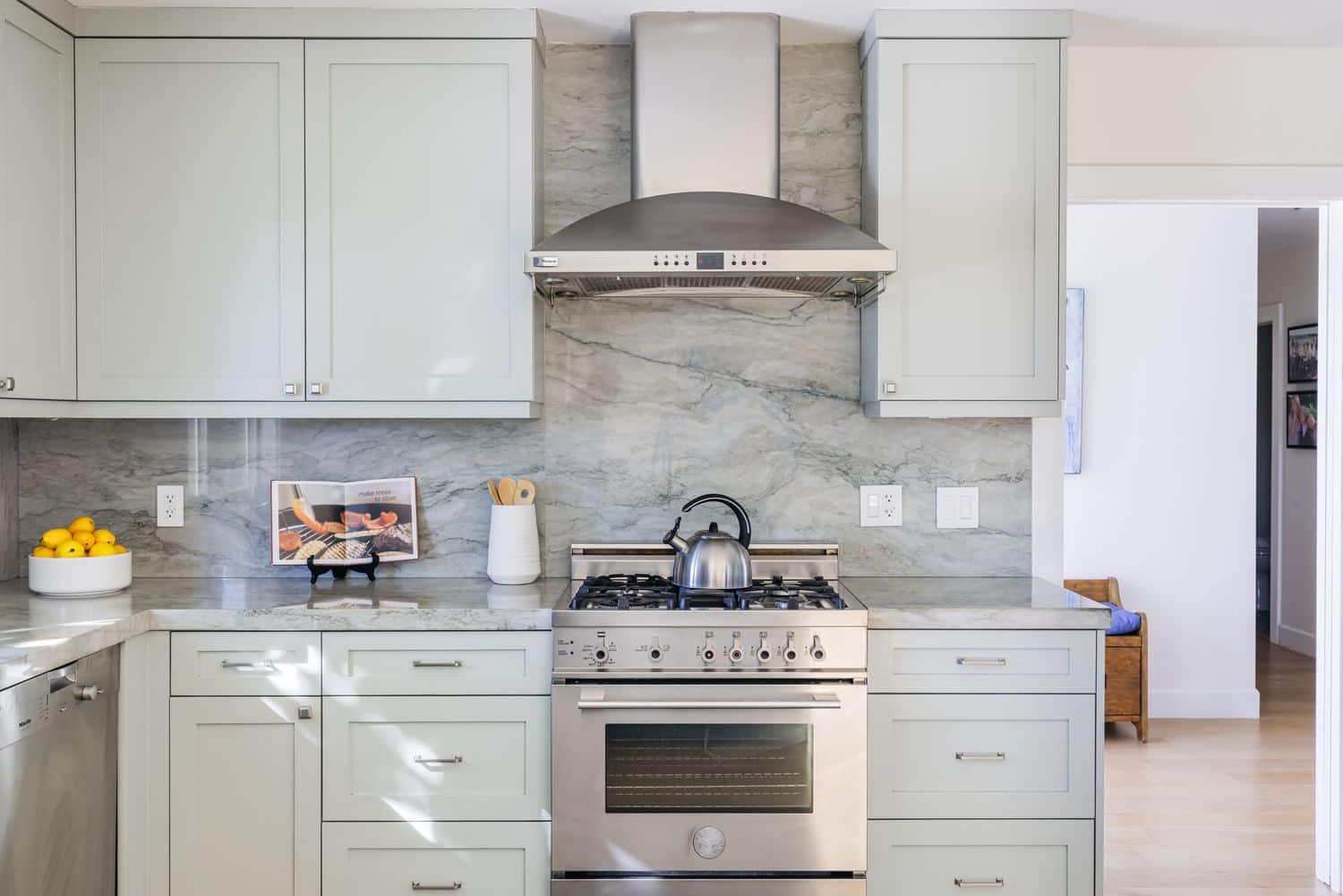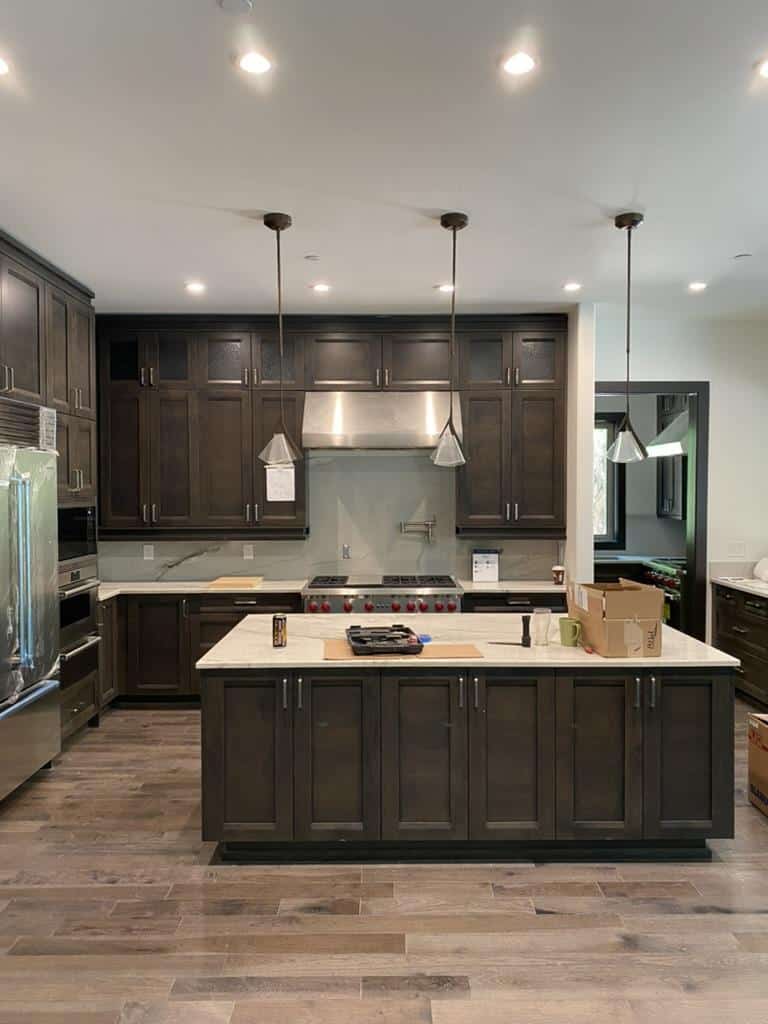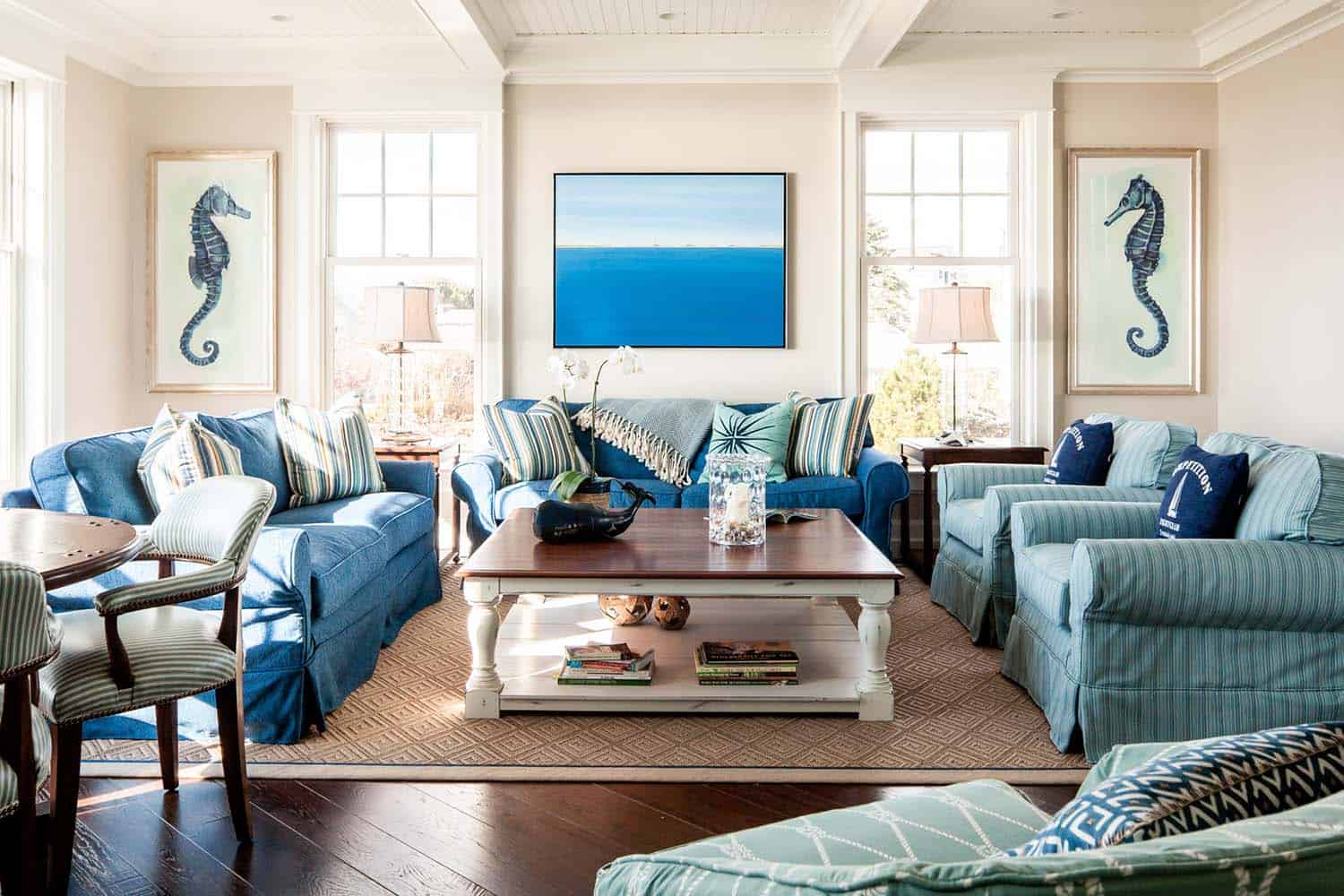Shaker vs. Raised Panel Cabinets: Which Is Right for Your Kitchen?
Kitchen cabinets do more than just hold your dishes and precious silverware—they also set the tone for your entire cooking space. The cabinet style you choose will influence how it feels to live and cook in your kitchen every day. When exploring design options, it’s important to consider your preferences, along with cost and maintenance, to get the most out of your investment.
Are you drawn to the simplicity of modern, clean lines, or do you prefer the character of a more traditional design?
In this blog, we’ll delve into two popular cabinet styles—Shaker and Raised Panel. We’ll break down the key features, benefits, and design aesthetics of each style to help you make the best possible choice.
What Are Shaker Panel Cabinets?

Shaker cabinets are known for their simple and straightforward design, featuring clean lines and flat panels. Originating from the Shaker religious community in the late 18th century, these cabinets reflect the group’s values of practicality and honesty in design.
The minimalist approach makes Shaker cabinets a versatile choice for various kitchen styles, making them a popular option in kitchen cabinet remodeling projects.
Typically constructed from hardwoods like maple, cherry, or oak, Shaker cabinets are durable and built to last. They often feature a five-piece door with a recessed center panel, and the hardware is usually understated, with simple knobs or handles. Finishes range from natural wood tones to painted options, with white, gray, and navy being popular choices.
Shaker cabinets work well in modern kitchens for those who prefer a sleek, uncluttered look. They’re also great for transitional kitchens that blend contemporary and traditional elements, as well as farmhouse-style kitchens that value simplicity and warmth.
What Are Raised Panel Kitchen Cabinets?

Raised Panel cabinets have a more intricate construction compared to Shaker cabinets. These cabinets feature a central panel that is slightly raised, surrounded by a detailed profile or beveled edge.
The origins of Raised Panel cabinets can be traced back to the 17th century, where they became popular in European and early American homes. This style has endured over the centuries, favored for its rich and elegant appearance.
Raised Panel cabinets are usually made from more expensive woods for kitchen cabinets like cherry, mahogany, or oak, with finishes that highlight the wood’s natural beauty or add a polished touch. These cabinets are commonly seen in traditional, classic, and ornate kitchen designs, where their detailed construction complements other elements like crown molding and decorative hardware.
This style is ideal for homeowners who appreciate a kitchen that feels grand and inviting, with cabinets that serve as a focal point in the room.
How Do They Compare?
When deciding between Shaker and Raised Panel cabinets, it’s essential to consider various factors that impact both the look and functionality of your kitchen. Here’s a quick breakdown of how these two popular styles compare across key aspects:
Shaker Cabinets
|
Raised Panel Cabinets
|
|---|
Tips to Maximize Your Kitchen’s Functionality
Whether you choose Shaker or Raised Panel kitchen cabinets, remember that functionality starts with smart cabinet design. Consider adding built-in organizers, pull-out shelves, or lazy Susans to make the most of your storage. These features not only keep your kitchen tidy but also make everyday tasks more convenient.
For homeowners who love fresh ingredients, having your kitchen next to a small garden space can be a game-changer. Some even take it a step further by connecting with local gardeners, perhaps offering a garden plot for rent, to create a true kitchen-to-table experience.
Your cabinet style can also enhance the synergy between indoor and outdoor spaces. If you enjoy gardening, selecting cabinets that complement your outdoor areas can create a seamless flow between your kitchen and garden. This is especially beneficial for those who rent out garden plots to local gardeners, as it blends practicality with the pleasure of having fresh, homegrown ingredients easily accessible from your kitchen.
Frequently Asked Questions (FAQs)
1. Are Shaker cabinets expensive compared to other styles?
Shaker cabinets are generally more affordable than styles with intricate designs, like Raised Panel cabinets. Their straightforward construction keeps costs lower, though prices can increase with premium materials like solid wood.
2. Are Shaker cabinets good for small kitchens?
Yes, Shaker cabinets are ideal for small kitchens. Their clean lines and simple design can make a small space feel more open and less cluttered, which is perfect for maximizing both style and functionality.
3. Are Raised Panel cabinets out of style in modern kitchens?
Raised Panel cabinets are less common in modern kitchens, where minimalist designs are preferred. However, they remain a classic choice for traditional and luxury kitchens, offering a timeless, elegant look.
4. What makes Shaker cabinets a good investment?
Shaker cabinets are durable, versatile, and have broad appeal. Their timeless design makes them a good investment, as they fit well with various kitchen styles and tend to retain their value over time.
5. How do Raised Panel cabinets compare in terms of cost?
Raised Panel cabinets are typically more expensive than Shaker cabinets due to their detailed construction and the materials used. They are a better fit for homeowners looking to create a more luxurious and traditional kitchen.
Making the Right Choice for Your Kitchen
The choice between Shaker and Raised Panel cabinets ultimately comes down to your personal style, kitchen layout, and long-term goals. Shaker cabinets offer a clean, versatile look that works well in modern and transitional kitchens, while Raised Panel cabinets bring a touch of traditional elegance to more classic spaces.
Consider the factors that matter most to you—cost, maintenance, design, and how each style fits into your overall vision for your kitchen. With the right choice, your kitchen will not only look great but also serve as a functional, welcoming space for years to come.







